
An after thought about the cancelling of Christmas
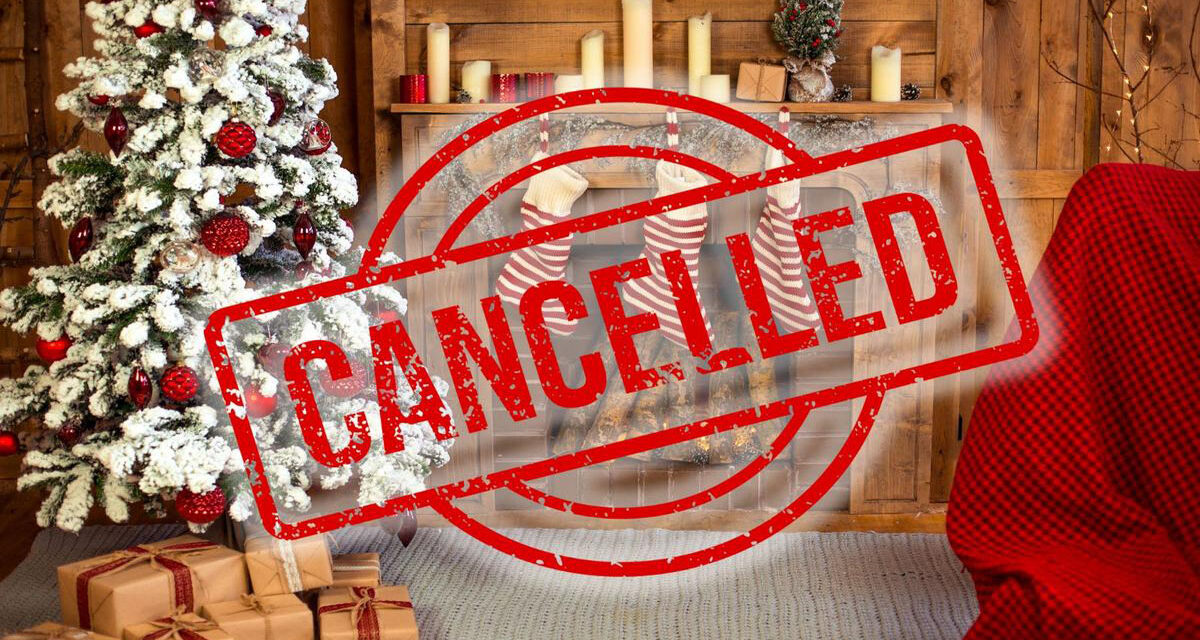
Christmas has come and gone – even the beat of the Twelve Drummers Drumming on the 12th day of Christmas (January 6th) According to the legend, that is the day the Three Kings arrived at the place of the nativity. What minimal attention that event receives in modern America has been further overshadowed by it being the same day of the official certification of our presidential elections – an event to which we rarely paid any attention until the Capitol Hill riots of January 6, 2021.
The more serious question Is whether Christmas is succumbing to the political correctness and left-wing theology? It is beyond refutation that Christmas is no longer celebrated in the full meaning of the holiday outside the tabernacles of Christian churches and schools.
The suppression of Christmas has been happening ever since the Supreme Court (mis)interpreted a letter from Thomas Jefferson to the Danbury Baptist Association in 1802. Jefferson argued for the separation of Church and State. For 145 years, it was generally believed that Jefferson was referring to a prohibition against ESTABLISHING a state religion – as was the case in England with King George serving as both monarch and head of the Anglican Church. It was NOT about the banishing all religious expression and events from the commons.
The Constitution – to which Jefferson contributed and signed on to – does not make any mention of barring religion from government property or government events. In fact, the First Amendment guarantees the free express of all religions.
For generations, Christmas – the real Christmas – was celebrated in every corner of America. The Creche was ubiquitous. Streets were festooned with decorations and iconic religious symbols. Radio, television and public address systems carried the traditional religious carols of the season.
It was not celebrated to the exclusion of other religions. All religions were welcomed in public places and had their holy days of celebration. Public school children prayed. Civic events were often opened and closed with prayers by clergy of different denominations. (When I planned civic events, I would generally engage a Christian clergy and a Jewish Rabbi for invocations and benedictions.) Retail establishment windows displayed symbols of Christmas – the Nativity, cross, angels, stars – and of other religions, such as the Menorah.
Perhaps Christmas had one advantage in the scope of the celebration. It was both a religious AND a national holiday – having been declared by Congress in 1870, along with Independence Day, New Year’s Day and Thanksgiving. Making Christmas a national holiday posed no threat to religious expression of every type. Also, Christianity was by far the most popular religion among the American people at the time – and still is. More than 60 percent of Americans identify as Christian.
Things changed in 1947 when the Supreme Court decided that the government could neither promote NOR INHIBIT the free expression of religion. In its decision, the High Court used the term “a wall of separation.” Later courts interpreted that to mean that all religious imagery and expression must be banned from all public events and places – contrary to the specific First Amendment protection against banning religious expression.
Over the years, Christmas has been driven from the commons. Government institutions ban even individual expressions of religion. The cancellation of Christmas spread to academia and commerce. While the holiday season was maintained, the symbols, songs, images and language of Christmas were banned. No more nativity scenes. No more crosses. No more angels. The Saint Nicholas of history and tradition disappeared in favor of a secular Santa Clause. (Just as Saint Valentine’s Day was shortened to Valentine’s Day.) The winter seasonal greeting was changed from Merry Christmas to Happy Holidays. The Christmas tree was renamed the holiday tree. Even that was mocked with the introduction of the Festivus Poll. The season of love for all was transformed into a secular celebration of materialism and greed.
The secularization of Christmas even influenced Christian churches. The Church of England has advised against “problematic” wording in some Christmas carols. Priests have been advised to drop the term “true Messiah” as offensive to Jews. And the most religious carols have been dropped from many Christmas church programs.
(I had that experience when attending a very liberal Catholic Church for my son’s Christmas show. Many of the traditional songs were dropped from the program to make room for non-Christian African music, Kwanza and Jewish holiday songs. The angry pushback from the congregation demonstrated how far removed left-wing elitist theology had drifted from the people in the pews.)
I will close on a personal note. Several years ago, I was in Harbin, China during the Christmas season. I was surprised to see Christmas symbols – including religious images — in stores and in public places. In one instance, I was in a park where the public address system was playing Oh, Holy Night. I got emotional listening to a traditional Christian hymn being played in the public square of a Communist atheist nation – something that is illegal in my own country.
Personally, I believe it is better that — as a free society – we openly and joyfully share our religious beliefs – and that the public commons is the ideal place to share. Not to ban and censor.
So, there ‘tis.





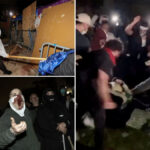







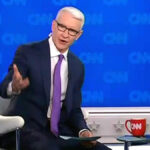



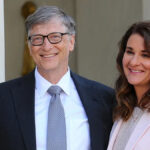



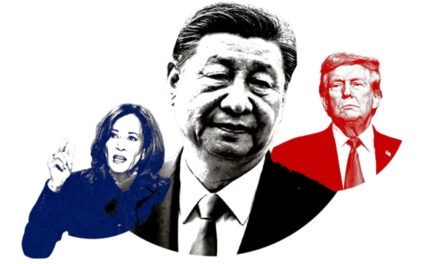
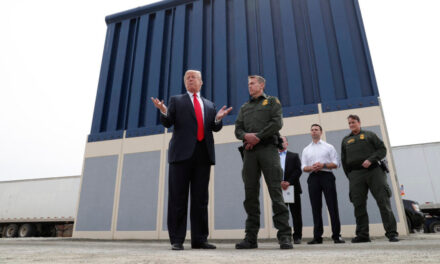
Horist is recycling again.
I am guessing rarely a new sentence here from past year’s versions.
My parody may have been lamer. but it was fresh!!
Frank Danger….. an odd criticism from a guy who repeats and repeats and repeats the same old litany about Trump … me …PBP … and the other writers. Just the old attack dog doing more projecting. You have not had a new thought since since you gave up being a drug dealer. And I have no idea which of your lame parodies you refer too.
I’ve gotten under his skin. I accuse him of recycling so he mirrors it back saying the problem is mine. Sorry, sir, I just started doing this. You know, previous life. Businessman. Of course you know, you follow me intensely. But you, you have been at it for over 40 years. Tell the truth: is that story NEW or a REHASH of what you have said before. You opened the door. I will be respectful and not ask, how many times have you run it, or something close to it?
I find Republicans interesting in that you often find the “holier than God” syndrome of judging morality for others while hypocritically breaking bad themselves. Got a perfect example here. Sure, we lefties have our own woke morality judgement play, but Republicans take the cake. They beat you over the head and shoulders with “pro life” while they would applaud shooting any Latino found in the Rio Grande River. Drop Nukes on Gaza and Ukraine. They are law and order but will elect an adjudicated felon to be their King. They are against lobbyists but accept billionaires buying Presidential access for a few millions. My “crimes” were 40 years ago, they are not crimes today, but it’s all he can talk about. No issues, just deal with my past from over 40 years ago as his cause celeb. He is obsessed with me, and not the issues.
Recently, a number of the righteous have vigorously attacked me for divulging that I sold pot over 4 decades ago. Also, building with permits and I love to speed. Not much today as my reactions are aged, but I still love to go fast. They attacked and attacked refusing to let up on their cause because they are right and from the right. Why?
I can’t speak to AF’s motives, seems weird, but with Horist, I have gotten under his skin….. He can’t refute the arguments, except weakly and with much name calling, but his old-man-mind remembers any perceived “insult” and he hold his grudge like an Irishman. He thinks he’s got me, he’s won, and now he can discount all my words based on actions in my youth, over 50 years ago. This time his old-man-mind with it’s old ideas, high n mighty fake moral code, stands judgement on all he feels inferior and wrong. He has little compassion for anyone he believes is on “the other side.” And like the proverbial junk-yard dog, once his teeth are stuck to my ankles, he will not let go.
Neither AF or Horist admit not partaking in tasting a little pot. AF says she never broke any law. Yeah, right, let God judge her on that one. And while they won’t admit any transgressions, Horist extends that to “serious felonies” tying that to me being “pompous,” “hypocritical in your judgement of others,” and having a more serious felony than Trump. In his old mind, he seems to forget my pot selling was 50 years ago, it’s basically legal now, while Trump’s felonies are still against the law, he got caught, whatever. He even claims my alleged crimes, self-admitted as they were, had victims whereas Trump’s crimes, that as a man he couldn’t even admit, were victimless. I said: “tell that to Hillary, tell that to people looking for the loans that Trump cheated to get. He even says I am like a Mafia hit man; that’s just deluded hate. And a lie. A Horist lie.
He then surmises: “YOU could not handle the truth in a courtroom since you dodged that bullet as you so smugly stated.” I think this man is on drugs to imagine all that since it’s all a big fat Horist lie. He does this to avoid talking on point, discussing the issues with facts, figures and expert sources. Because he can’t toe the line. So, he obsesses, vents, name calls, demean, defames, and now hyperventilates over some pot.
Did this old man live in the 60’s and 70’s? How did he miss trying some pot. And IF he did try some pot, how the fuck did he think he got it? Fell out of the sky? And then he tee’s off on my speeding and a few other traffic thingees as if he has never gone over the speed limit, never missed a stop sign or light. Oh my God how old is this guy? I asked him if he never transgressed on the law, never went over the limit, got a traffic tickets and he answers: crickets. Who the fuck is sitting in hypercritical judgement now? Guy lobbied for big tobacco, victimless crime? He worked for Nixon, yeah, that’s law and order. Who the fuck is he to judge me?
And my crimes were over half a century ago. Let it go Larry. Doesn’t everyone get a second chance.
And the guy voted for a known adjudicated felon, a known repeated sex abuser, a judge-ruled digital rapist, a defamer of women, a man who stole from his own University students, he stole from his own charity foundation, his business has dozens of felonies, tax abuses, and more. And he calls me a hypocrite to judge as he judges me inferior while voting for a felon by this great man of the rule of law.
What other crimes for Horist? Ever inflate a charity donation to tax purposes? How about selling something without reporting the taxes. He vents about me not getting some building permits; this guy had a really old house, I tend to doubt he got all the permits required over the years to do the work he probably did.
Now watch the junk yard dog drag this out, embellish it over time, just like he continues to drag out my DC thumping by a cop for crossing PA ave in front of Nixon’s house where he was on the inside aiding and abetting the criminal Nixon. He got that wrong and, when corrected, continues to get it wrong as his embellishment gets larger and stranger with each rendition.
HEY LARRY —- I JAYWALK TOO.
Sorry Larry, America is a country full of rebels. You just voted for one. Get over it old man. And let’s hear how your voting for a known, adjudicated, felon shows your true respect on the rule of law and allows you to sit in judgement of my freely-shared transgressions, legal now, over 50 years ago. Then tell us your thoughts on second chances……
Like I said, I find Republicans interesting in how they judge others for what they freely do
.
Then again, I spell my name: danger. But I am not really.
Frank Danger …. I did not get past the first sentence or two. I assume it is the usual repetitions attacks on me. For the record, I will tell you that you did not get under my skin …never do. You flatter yourself with you sense of importance. I know you will not believe that because your ignorant opinions and mischaracterizations — offered up with a fine whine — are meant for the imaginary Horist you invented to justify you factual ignorance. On the other hand, from the length of your writing alone, I do believe it is your skin that has been punctured. Still laughing?
Festivus Pole. POLE. Not Poll.
Pole. A long slender usually cylindrical object.
versus
Poll: (1): the casting or recording of the votes of a body of persons
(2) a questioning or canvassing of persons selected at random or by quota to obtain information or opinions to be analyzed
(3) a record of the information so obtained
PS: You did the very thing your lamentation discussed in your first paragraph. i.e. “According to the legend…” Better said as “Christians hail this as the day the wise men appeared.”
BobW … Correction appreciated. Too much political writing. Not sure why your rewrite is better than mine … and not worse, in my judgment.. Seems more like a distinction without a difference.
So that is what you took from this?
Larry used the wrong Poll?
Your English teacher must be proud!
I guess in the case of some of the commenters, grammar
is all that can be comprehended!
Thank you for standing up for what is correct Larry.
I believe I spelled everything correct?
Darren Boyajian… I have no excuse, I went to school during a bad spell.
So that is what you took from this?
Larry used the wrong Poll?
Your English teacher must be proud!
I guess in the case of some of the commenters, grammar
is all that can be comprehended!
Thank you for standing up for what is correct Larry.
I believe I spelled everything correct?
Jesus Frank, you said some fighting words. You accuse me of doing some drugs or pot. NADA! I have never taken anything other than prescribed by a doctor which I have not even been able to do that for many, many years. I have a problem with any drugs, medicine drugs. I have ended up in the ER due to them. People have found me on the ground due to them. I do take Aleve occasionally. That’ is it.
You accuse Larry of name calling which you have also done to me. You were the one who started the name calling a very long time ago on PBP. I have saved every one of those emails with your name calling. You sowed the seeds; you got what you sowed.
You accuse Larry of name calling, saying demeaning words, and more, but reread all of your words. You do it all the time. You are worse for it.
Then, nothing in your stupid posts today said anything about today’s Christmas theme. All you did was bemoan yourself and go off topic and tell people off. You are a narcissist, pure and simple. Nothing anyone says can be said without you going off on us. You taught us well how to do that. You always have to be shown as the smart guy, the good guy while you show us to be haters, criminals and worthless. However, that is what we see of and in you. You are in your 70’s now as I am but, I think I am older than you. At your age, you should have learned all about life and what is in God’s plan. You don’t. You didn’t. You are with Satan. That is why you spell your name Danger. The Satanists are those who are traffickers, murderers, robbers, rapists, dictators, and anti-human who use ritualistic methods to torture and torment. You are a narcissist who always have to have the last word no matter what. Now, we do the same to you, gladly. There is no hope for you. You are so far gone you are totally pathetic. I still think you are a CIA plant. We will not stop period! I happen to really love Larry’s story and empathize with the story. You simply cannot make Larry be the bad guy. It didn’t work. Try praying, it might help you. Bye for now! Have a good day!
I never accused you of smoking pot, I asked a question. Frank Danger has never called you a name. Yes, a few name generations ago I did, but I admitted my error in judgement, try it, and have not repeated it except for Dempsey, but The Dumpster name is fact-based. I have never sent you an email. I do not have your address. You saving my stuff is priceless.
Yes, call me as being with Satan. Yup, 50% of the country thinks similar as I. Not exact, but similar. That’s right dear, Satan is all around you. He’s everywhere. Especially where you live. You nailed it. America — Satan’s country. America First.
The post is hilarious. Great story Larry.
Frank, I did not say you ever sent me an email I said I have saved every single email from PBP. Don’t you understand correct English or are you grabbing at straws again? You will do anything to prove you are right even slandering me and others with your basket of filth! I cannot believe anyone could stoop so low as you do all the time. That pot statement? Well, you alluded to me smoking pot. Thant is what is wrong with your brain – you did and probably still do a lot of drugs, I don’t know. You are now the laughingstock of Punching Bag Post. Proud of yourself? You said “You nailed it. America – Satan’s country. You live in America, too and you worship Satan. Probably involved with the trafficking, too. That remains to be seen. But I would not be surprised to learn you traffic babies, children and women. Should I add boys to that? You are so f’d up. On your way to Hell, keep on going!
PBP emails you? How odd. I understood your English perfectly.
Again with the alluding fantasy. I said what I said and it was a question, not a statement. I did not allude. You misconstrued. .
I never did a lot of drugs. Never said I did. You imagined that delusional misconception of the weird variety.
I do not worship Satan. You said that. Matter of fact, nothing you say about me is the truth and you just blather bullshit about me to fill your own deep seated weird needs.
This is pure crazy talk. .
Or you are right. Uh oh.
This article earns a Stop The Spin rating of 1.5, mostly because it spins the effect of liberal minded people on Christmas as “prohibitive” when the reality is that 1) Our Constitution prohibits a state religion; 2) The Liberal cause as I see it (as an Independent) is a multi-cultural society that should be inclusive, not exclusive. Thus Christian displays may bother some extreme liberals, but not any of the moderate liberals I know. Larry seems to be pointing out extremist Liberals and making them sound like the normal Frank Stetson / Danger kind of Liberal, which they are not. 3) The GOP led State of Louisiana is attempting to force the Ten Commandments in all of its public schools which most MAGA think is just fine. 4) Trump had no problem using tear gas to clear a space infront of a Christian church so that he could display the Bible (which he now also has the “Trump bible for sale for $65) during a government related activity.
As a practicing Christian, I am in favor of placing the holiday in the real month of Jesus Christ’s birth which was either mid March or mid September. Emperor Constantine used the celebration of the winter equinox (Feast of the Sun God) as a way of uniting Christians with Pagans and increasing his power and influence. The most likely month is September because it aligns with the census as well as the Jewish Festival of Tabernacles which means “God is with us” and Jesus was called Emmanuel which means God with us. The one obvious month that the shepherds would not be out in the field laying with their sheep is in December! It is cold and very rainy in December in the Holy Land. During winter months most shepherds wintered their sheep in barns and were not seen in the fields. My comment is based on scripture and recorded events such as census, Jewish feasts, weather conditions in the Holy Land during the calendar year, etc.
Yes Larry, Christmas in China is interesting. I have been to Shanghai and Nanjing for Christmas. But there are localities that do not celebrate Christmas. Much of whether Christmas is celebrated or not is a local government call. There are approximately 60 million Christians in China. China allows for religious freedom (so they say) but there are some caveats: 1) Many towns do not allow crosses on the outside of churches, 2) China has an approved version of the Christian bible and no other versions are approved. In extreme cases, you can be cited in violation of law if you have the wrong version. The Chinese version of the Christian Bible does rewrite anything that might be interpreted as not being pro-CCP. 3) The Catholic Church cardinal must be approved by the CCP, and the Pope does submit to this. For more on Christianity and Chinese Government rules see the white paper they publish on their website at *http://english.www.gov.cn/archive/white_paper/2018/04/04/content_281476100999028.htm*
Tom … Your silly and irrelevant spin number shows your bias, since you disagreed with nothing I wrote in the commentary. But you did rant over a lot of issues not part of the commentary. More spleen venting than dialogue. I am happy that you and Frank have PBP to amuse yourselves.
First, Beyond whatever your opinion, Larry, there stands Pres. Jimmy Carter in America’s History and his legacy says he was an honorable person, honest President, and long lived great and decent leader.
As his politics were of the Democratic Party, you are by nature apposed to every policy and bill he enacted. That Pres. Jerry Ford and Carter were close friends and were in agreement on many issues probably changes nothing, because of Carter’s party affliction.
Carter post dates Nixon as President and Ford, but Jimmy did more good in his 4 years than Trump in his 4, no contest. Trump would surprise us all if he managed a single good thing for all American’s while he’s president.
Larry, if you are truly and agnostic on religion and a former Roman Catholic Church member, then your treatise on Christmas Celebration seems to be your mourning your loss of seeing Christmas Celebrated as it traditionally had been. What is it you are lamenting about Christmas when you state that you don’t count yourself in the 60% statistic. Assuming your agnosticism on Christianity that you are not by definition a Christ follower and do not put your faith in who he is.
Therefore, Christmas Day and the Christian Church’s Season of Advent preceding it has no significance for you. Christmas Day is little more than a national holiday in your nonreligious ideology. Its being relegated to national holiday status strips away all special and unique religious connotations from Christmas as the Church celebrating Christ’s birth with the Holy Mass is that what you lament.
Christmas for many believers and nonbelievers alike offers one the opportunity of realizing what having “the sprite of Christmas” is and an appreciation of that spirit’s meaning by understanding why gift’s are exchanged on Christmas Day.
Lest you forget, and that non Christians everywhere mimic in exchanging gifts on December 25th, the greatest gift ever given is the miracle of Christ’s birth.
Larry, the true spirit of Christmas does not last for a day or a season, but for one’s whole life time. Through ever season of the Church Calendar Year especially during Lent leading to Good Friday, then Easter Day.
Your article chronicles Christmas Season celebrations’ seeming decline through the years of the 20th and 21st Centuries to date from what Christmas traditionally had been. Back in the day when Christmas was celebrated in its historical correctness.
My readings of your commentaries over time have recorded your Christmas musings and as I recollect each year’s post Christmas commentary attempting to critique Christmas’ state of affairs in the context of culture today. You write as if the article’s subject will be about Christmas these days are not as the Holy Day was once many years ago and gone. Your enumerating your reflections on songs of the season religious and secular with secular music dominating over sacred Christmas songs and hymns happens to be a reoccurring theme each post season posting.
However you color your phrasing in years past you mostly stay the course this time in 2025 just T-10 days until blastoff a Trump 2.0, but you did not think your work was done if you had omitted your usual and customary opinion commentary portraying those evil liberals as the Grinches who stole Christmas. After all, isn’t the problem with this world begun in the liberalism ideology, turned into a philosophy, and dominating liberal politics. Such as the Democrats espouse and pervert the good of this country’s democracy
When people are polled and asked what religion they identify with. The politically correct answer for the great majority of Americans will answer Christian. Few polls ask if they attend services and how often they attend.
Less yet are those polls interested in how many church attenders believe the Christian faith and give their 10% tithe.. When those real numbers are known and objectively considered. My hunch is that what the Christian Church has been saying and predicting about church attendance declining over the last 25+ years before the pandemic closed churches for services. Post pandemic numbers in church pews has not returned to pre pandemic attendance.
The state of Christmas’ wellbeing and its observance in a traditional fashion is a topic that often arises in churches everywhere and discussed with no little emotion. But whatever it is that appears to be stealing Christmas from our sight and replacing it with Holidays is not a Grinch in some children’s story. Nor is there one culprit named liberal at the root of what Larry had observed. Simply put: clearly what is at the center and the nub that no former church goer or C & E attending Christians think about is whether or not people truly identify as a person who has the Spirit that brought Christmas into being in their core. That’s a hug personal decision in one’s life. The future will tell if Larry’s idealized Christmas becomes a mere formality and ultimately changed into another holiday.
What is not a cause of what Larry opines as happening is liberal politics turning Christmas into another day off for banks, postal deliveries, and government offices.
Maybe those who think they fully understand American liberal-democratic republic and what that describes for government and got the people, are not walking their talk. When it’s understood that it’s “We the people…” That means ALL THE PEOPLE. The Founding Fathers did write an exclusionary clause stating that only those who agree with one opinion are allowed certain rights.
Interesting, or not so much as it’s predictable, where you, Larry, will find your material when Trump’s steam engine puff puffs into Washington, DC to begin his lame duck term in office. He will dominate the daily news cycles and obfuscate his intent on destruction of government as we know it by seeding the media with politically unhinged distractions MAGA will chase.
Crickets, Crickets, and Crickets Silence is Golden!